Here's a quick lesson on how the technology works and what the major components are.
Records are recorded by cutting a small groove into a vinyl or acetate disk. The groove is modulated with the audio signal so that its depth and shape records the sound signal itself. During playback, the disk sits on the platter, which is the motor-driven spinning component and spins at a constant rate. Several rates were used, with the most common being 33-1/3 RPM (for 12" LP records) and 45 RPM (for 7" singles). While the disk spins, the
stylus (or needle) which is housed in the
cartridge rests in the groove. Holding the cartridge and stylus against the record is the
tonearm that swings from a pivot as the stylus moves across the record, and has a counterweight to balance the force of the stylus on the record. As the stylus vibrates due to the groove's contours, coils in the cartridge convert the movement to an electrical signal. The electrical signal is of a very low strength, and must be amplified before it's sent to an amplifier or recording device. This task is handled by a dedicated
phono preamp (or an integrated one in the speaker amplifier), which also performs another critical task - equalization. Due to the mechanical constraints of the record medium, both low and high frequencies are much quieter on the record than they should be at playback. A special equalization filter must be applied to restore the correct tonal balance; this task is performed by the phono preamp at the same time it is amplifying the signal to a usable level. This signal is then taken into a standard line input and amplified for playback, or recorded.
EquipmentI will discuss the turntable and cartridge/stylus separately here, as they are generally purchased separately. Chances are good that you'll need to purchase at least 3 components - a turntable, cartridge and phono preamp, so I'll spend the most time talking about these. If you need to buy all three, you should budget for at a bare minimum $200 expense (and a lot of time). If you need a quality sound card as well, budget another $100.
TurntableTurntable quality is often assumed to be of little importance. All it does is spin the record, right? Unfortunately for us, that's not really true. What a record player does is convert physical vibration (of the needle in the groove) to an electrical signal that can drive an amplifier. The problems arise from the fact that the groove might not be the only thing vibrating the stylus - motors and mechanical instability can be huge noise culprits. Furthermore, frequency stability in the motor is extremely important to reduce wow and flutter. You can check this using the strobe built in to most higher-end turntables. Most turntables will have a dot or dash pattern around the outside of the platter. Many also include a built-in strobe, which flashes at a particular frequency. By looking at the dot pattern while the platter is moving with the strobe on, you should see the dots (usually one row for each speed) 'frozen' in place by the strobe. Any movement or wavering indicates an unstable speed.
If you're buying a new turntable, I would recommend looking on the used market for a belt driven model constructed mainly of wood or metal (plastic vibrates much more easily). Some direct drive models are good too, but others are horrible - if you're looking at one of these, be careful. Consistently good brands include Dual, AR, Thorens, Linn and others. Aim for models that were top of the line in their day. Also avoid any with a 'linear tracking' mechanism as these require additional tuning and have many problems. You can identify these types as they don't have a tonearm, the cartridge assembly moves on a tube across the record.
This is a place where you really need to research your options and put in the care to get a good turntable. Most of the stuff out there is going to be crap, and you need to sort through it and find the rare gems to get decent quality. Especially with belt-drive and idler-based turntables you may need to replace belts or idler wheels to get stable rotation speeds. Check this before purchase, or expect to invest in the maintenance if buying online. If you can't find anyone praising it on forums and so on, don't buy it.
Because of the difficulty with finding and getting a good vintage turntable tuned up, you may want to consider the new (or less-used) market. Price goes up to $300-400 for a new quality turntable. Look at options like the Pro-Ject Debut III and Rega P1 and P2. These will often include a quality cartridge.
Spend $75-100 on the used market, though the sky's the limit.
Stylus & CartridgeChoosing a cartridge is largely a matter of personal preference, but there are some important considerations. First, you should replace any cartridge that you don't know the history of, they are easily damaged and do wear out with use and over time, so if you buy a used turntable you should buy a new cartridge as well.
Several types of cartridge are available. Most cartridges are of the moving magnet type, and these are also the least expensive. If you're reading this guide, this is the type you should buy. Beware that there are two common mounting methods used for cartridges. The P mount has a rear section that fits inside the tonearm, while the standard (1/2 inch) mount screws onto the underside of the tonearm. Make sure you get the right type, or a universal type.
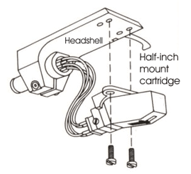
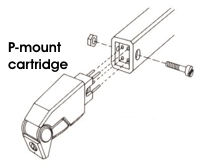
Good brands include Grado, Ortofon, Audio Technica and others. Choosing a specific model can be particular about the exact properties of your turntable and tonearm, so I would advise asking at a Hi-Fi audio shop or audio forum for advice. The most commonly recommended cartridge I've seen is the Grado Black, which is relatively inexpensive and readily available. Audio Technica AT95 is also often recommended and is somewhat less expensive.
Spend $50-75. Don't buy used.
Phono PreampYou may have one already, if you've got a receiver/amplifier with a phono input. The quality may not be the best, but it would certainly be usable. If you've got such a unit, connect the turntable to it and switch the input to 'phono'. It should have a 'tape monitor' or 'preamplifier' output that you can use to record from. I do not recommend this option if you can avoid it though, most receivers have cheap, poor sounding and noisy phono preamps.
If you're buying, there are lots of options. The used market is a good place to look, try to find reviews by audio magazines or on audio forums for ones you're considering. Excellent new phono preamps can be had for quite a small amount of money, so that is the route I recommend. The TCC TC-760LC is widely regarded as a good deal - it's only about $75 and reportedly sounds good. Another good option is the Cambridge Audio Azur 540P, also well regarded and available for under $100. For a few more dollars the
Hagtech Bugle seems to be universally loved, at $150 (with no case or power supply). If you've got some electronics savvy and would consider a DIY solution, the
RJM Audio VSPS is a good choice and can be built for next to nothing, the Phonoclone at the same site is also excellent, as is the DIY version of the Bugle.
Expect to spend $75-100 on the new market, or $25-75 on the used market.
Sound Card/Capture DeviceYou'll need a good quality sound card capable of 96KHz/24bit or 192KHz/24bit capture. Aim for a device with good analog specifications. Unfortunately onboard audio devices don't meet this requirement, you'll definitely need a separate sound card to get a decent quality capture. If you've already got a Creative X-Fi model card, it will suffice, but I can't recommend these for anyone purchasing a new one. If you've got a PC with a PCI slot available, I recommend the e-mu 0404PCI or e-mu 1212m (about the same price, the 1212m is much better if you can get it), or the M-Audio Audiophile 192. If you can't find these, the M-Audio Audiophile 2496 is an excellent card as well, though it doesn't support 192KHz operation and doesn't have as impressive specifications. Finally, if you need multichannel or a more entertainment oriented card, the Asus Xonar DX2 is probably a good choice.
If you'd like an external unit, I can recommend the e-mu 0404USB or e-mu 0202USB. For Firewire, the M-Audio Firewire Solo is fairly well regarded. Going with external will cost you extra and probably sacrifice some quality too (at this price range), so I'd go with internal if you can.
Spend $100-150 new for an internal, $200-250 for an external.
CablesYou'll also need interconnects, to hook all of this up. You'll need at least one stereo RCA cable to connect the turntable to your preamp (though many turntables have this attached), as well as the correct cable to connect the RCA jacks on your preamp to your sound card. There are three common jacks used on sound cards, and you'll need to get the correct type for your card. Consult the following descriptions to determine what type of cable you need.
RCA jacks appear in pairs colour coded red and white (or black), they're the same type used for most audio equipment. The red jack carries the right channel audio signal, the white jack carries the left channel. If your sound card has this type (Audiophile 2496), you need a standard RCA cable. They look like this:
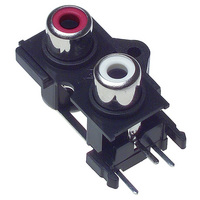
3.5mm (1/8") 'Mini' jacks are common on consumer gear, and are the type most people are familiar with. They carry both stereo audio signals on the same connector. The same type is used on iPods and other portable devices, and most headphones today use this type of plug. I don't have a good photo of an example, but most people should be familiar with these. The necessary cable is readily available.
1/4" TRS jacks are common on professional gear, and generally carry only a single channel per cable. There are 3 conductors in this jack, tip-ring-shield (TRS), designed for balanced signals. In our application we're going to be using single-ended signals, so a connector with two conductors (TS) is more appropriate. If you have this type of input (All e-mu cards, M-Audio Firewire Solo), you will need a pair of RCA to TS cables (or a stereo set). These are somewhat more difficult to acquire, but should be readily available at professional audio equipment dealers (probably where you bought your sound card anyway). The TRS jack can take on a couple forms, as it is often used in a 'combo' connector that can accept either an XLR jack (microphone) or TRS jack. It looks like one of the two jacks in the photo:
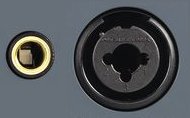
Don't waste your money on overpriced cables. You shouldn't spend more than $10 on a 6ft cable, so don't let anyone sell you more expensive ones (such as Monster Cable), they are NOT worth the money.
I recommend you buy your RCA cables from Monoprice. The quality is good, the service good, and the prices (and shipping) excellent. Their RCA->mini cables are of dubious quality though, and they don't sell RCA->TS cables either. I'll link to what I recommend for each, though they're very non critical and similar examples can be found at most retailers. Don't try to use the XLR inputs on your professional soundcard, as these are designed for microphone use and won't work properly with your phono preamp.
-2xRCA to 2xRCA, 3ft or 6ft
- Technologies Inc. 3.5mm to 2xRCA, 5ft or at monoprice
-2xRCA to 2x1/4" TS, 5ft
PC
Most any PC should work fine for this. You'll need lots of disk space (you should have a minimum of 10GB free before attempting a capture), but the performance requirements are not particularly high. USB will use the most processing power, and has the most risk of audio dropouts.
For vinyl ripping, see:
- Vinyl Ripping
- Vinyl Ripping: 24bit 96khz
 At a glance, GSM Hacks will look like your average mobile reviews and news site. Actually it’s much more than that; GSM Hacks Forums is where all the fun is. Their “Mobile Applications” section in General Discussion forums is home to many cracked (and non cracked) Symbian OS 9.1 Applications, Symbian Series 60/80/90 Applications, Pocket PC & Windows Smartphone Applications and Sony Ericsson Applications. Finding a particular item by browsing all the threads is not easy at GSM Hacks so it would be wise to use the search feature.
At a glance, GSM Hacks will look like your average mobile reviews and news site. Actually it’s much more than that; GSM Hacks Forums is where all the fun is. Their “Mobile Applications” section in General Discussion forums is home to many cracked (and non cracked) Symbian OS 9.1 Applications, Symbian Series 60/80/90 Applications, Pocket PC & Windows Smartphone Applications and Sony Ericsson Applications. Finding a particular item by browsing all the threads is not easy at GSM Hacks so it would be wise to use the search feature. Noeman GSM, which is part of the Noeman Network, is a huge online community with nearly 370000 members. Check under ‘Mobile Software Solutions’ and ‘Mobile Multimedia’ sections in their forums and you will find a lot of full applications, games and themes for S60, UIQ, S80, S90, Pocket PC, Smartphone, java based mobile devices. Some of the cracked applications are scene releases.
Noeman GSM, which is part of the Noeman Network, is a huge online community with nearly 370000 members. Check under ‘Mobile Software Solutions’ and ‘Mobile Multimedia’ sections in their forums and you will find a lot of full applications, games and themes for S60, UIQ, S80, S90, Pocket PC, Smartphone, java based mobile devices. Some of the cracked applications are scene releases.




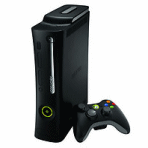
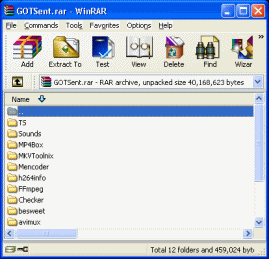
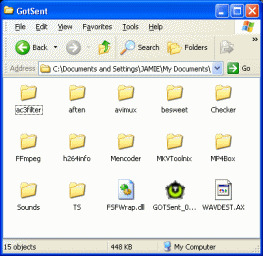

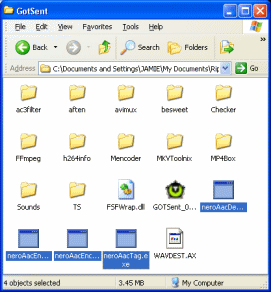
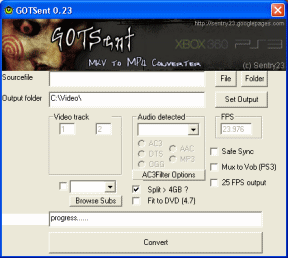
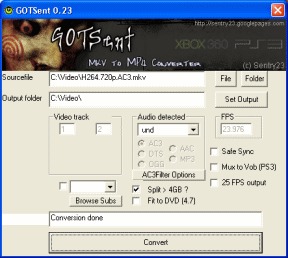
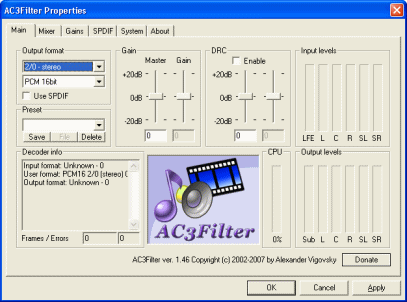

















 — Denotes trackers that are currently open for signups.
— Denotes trackers that are currently open for signups. — The registration page exists, but signups are not open.
— The registration page exists, but signups are not open. — Search timed out (no results reported).
— Search timed out (no results reported). — Signup page is down, or the tracker is offline.
— Signup page is down, or the tracker is offline.











